[ad_1]
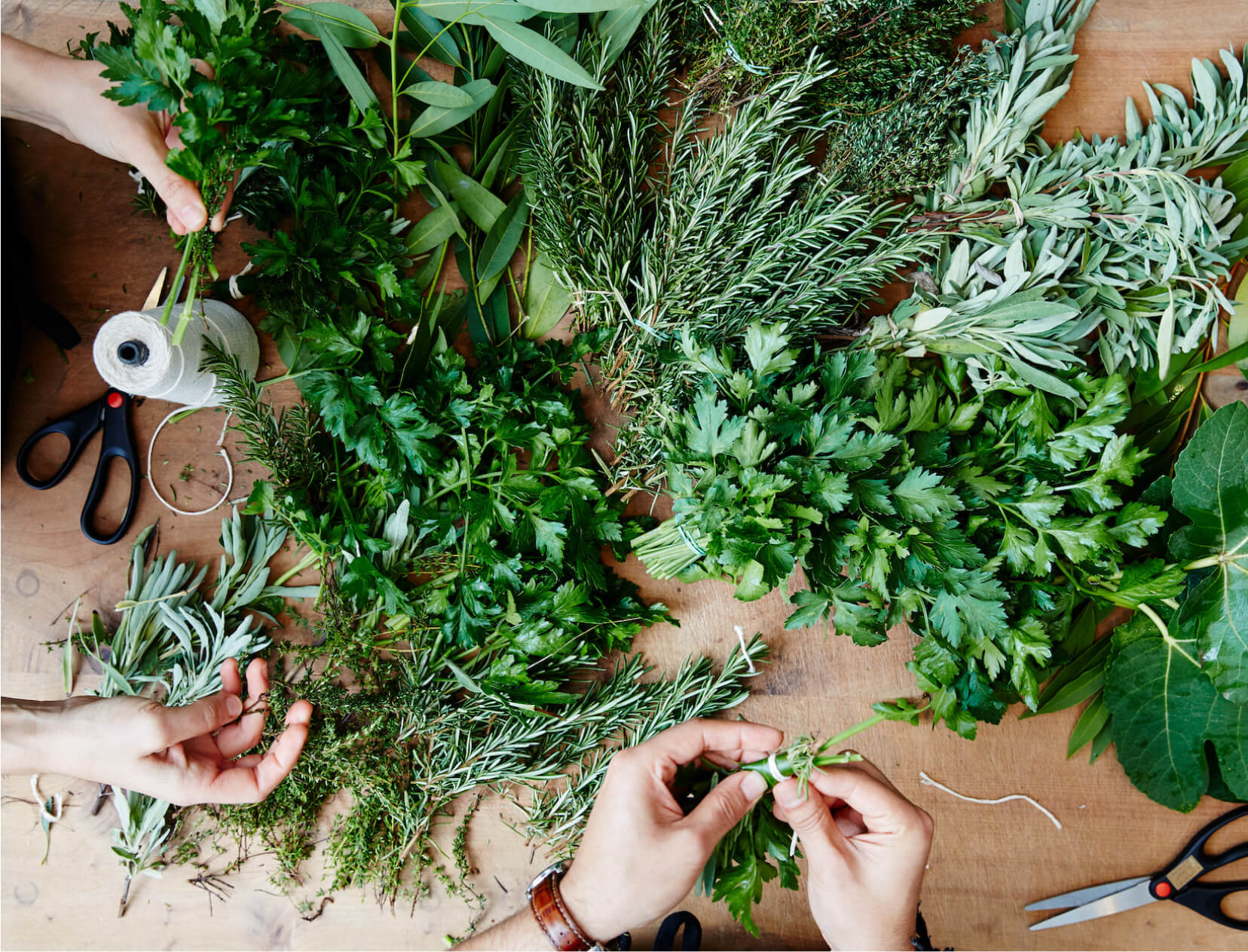
6 Functional Herbs to
Grow and Use at Home
There are two great benefits to growing your own medicinal herbs: You know exactly where they come from and what went into cultivating them. And you get a continuous supply.
We asked herbalist Rachelle Robinett, the founder of HRBLS and Pharmakon Supernatural, to share six functional herbs for beginners, how to grow them, and what to do with your bounty.
Lavender
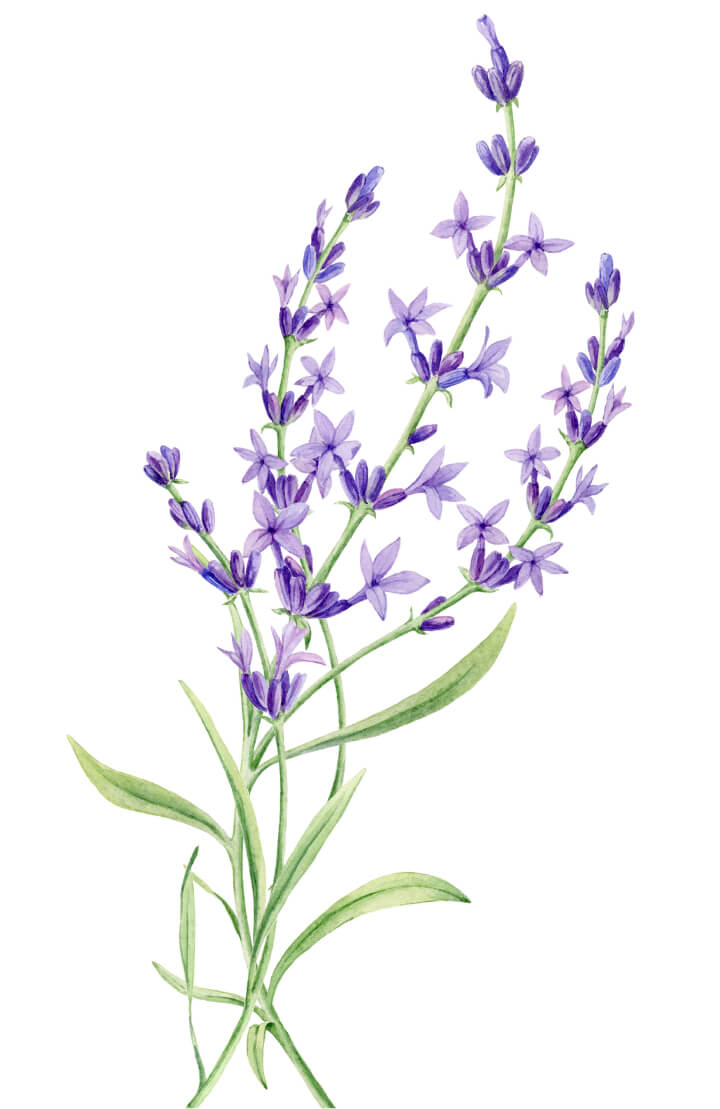
What makes it so good: Lavender belongs to a class of herbs called nervines, which support a healthy nervous system and a sense of balance in the body. (Other nervines include chamomile, kava, lemon balm, and valerian.) Lavender is one of the best-studied herbs for creating a sense of calm. Robinett loves it because it’s universally well-tolerated and super versatile.
How to grow it: Lavender does best in full sun; lower-quality, well-draining soils; and mostly dry conditions. So stick it somewhere sunny and neglect it a little. It is a slow grower, so don’t expect a bounty in your first year.
What part of the plant to use: The flower buds, mostly. The flowers and leaves are edible too, but you’ll get the most out of the buds.
How to harvest it: Don’t wait until the flowers open—the natural oils in the plant won’t be as strong. Snip each stem around the top of the leaves, but avoid cutting the woody parts of the plant. (If you cut them, it won’t grow back.) Then you can use your fingers or a pair of scissors to peel the buds away from the stems.
How to use it: Smash up some buds for homemade teas and tinctures or bake your lavender into something sweet. Robinett says even just smelling lavender is a great way to get the benefits—maybe you’d like to place lavender bunches around the house or pack the dried flower buds into an eye pillow.
Goes well with: Rosemary, lemon balm, and valerian.
Rosemary
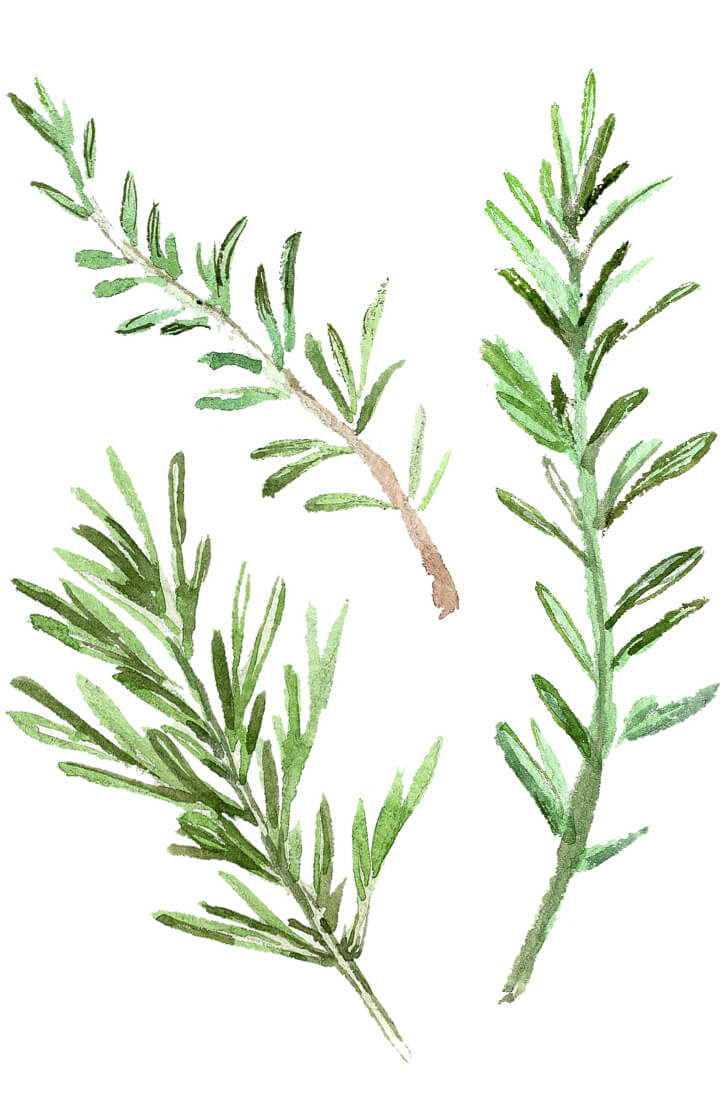
What makes it so good: Robinett uses rosemary when she wants to support memory and cognitive function; it’s a nootropic, meaning it boosts brain function. It’s most widely known for that purpose: There’s even a quote in Hamlet that says rosemary is for remembrance. In herbalism, it’s also considered a carminative, or digestive tonic, and it’s said to support healthy circulation, too.
How to grow it: Rosemary is hardy and can tolerate extreme temperatures. And it barely needs water. Just put it somewhere that gets sunlight for a good part of the day and harvest generously once the plant starts taking off.
What part of the plant to use: The leaves.
How to harvest it: Snip off whole sprigs with a pair of garden shears.
How to use it: In a bath after a tough workout. Take a fistful of cuttings—no need to separate the leaves from the twigs, but you might want to give them a quick rinse to remove any dirt—and pack them into a large sachet to steep them in your tub.
Goes well with: Holy basil, lavender, and bacopa.
Rose geranium
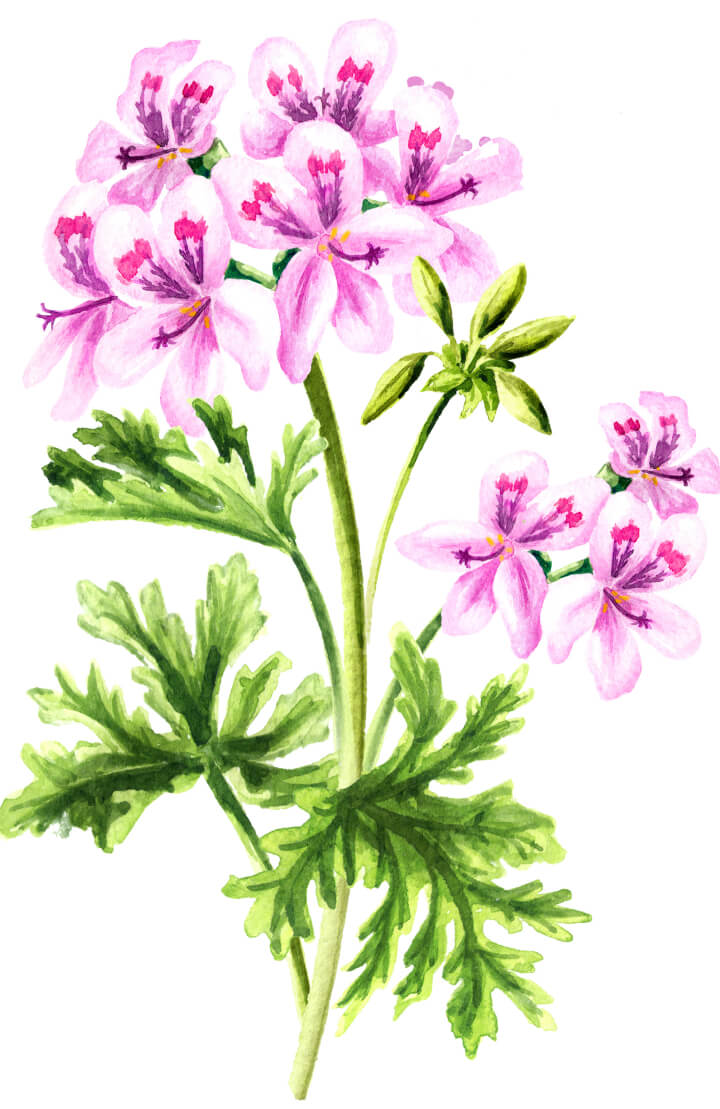
What makes it so good: Like witch hazel, rose geranium is considered an astringent, meaning it can be a good supporter for your skin and digestive tract. It’s also pungent in a good way: You don’t need a ton of it, just a leaf or two.
How to grow it: Robinett loves rose geranium partly because it’s difficult to kill. Plant it wherever: in the ground, in a pot, inside. Just don’t water it too much—it doesn’t like to be that wet. If it starts to get leggy, go ahead and trim it back to encourage it to bush up a bit. (If you stick your cuttings upright in the soil surrounding your plant, it may propagate into new growth.)
What part of the plant to use: The leaves.
How to harvest it: Pluck the leaves one by one—again, you don’t need too much at once.
How to use it: Robinett likes a rose geranium water infusion—just pluck off a leaf or two and drop it into a glass of sparkling water. Or, if you’re feeling crafty, she suggests making your own home and body products: Her homemade deodorant consists of rose geranium, witch hazel, aloe vera, and sage. Or muddle it with rose water to make a room spray.
Goes well with: Witch hazel and rose water.
Lemon balm
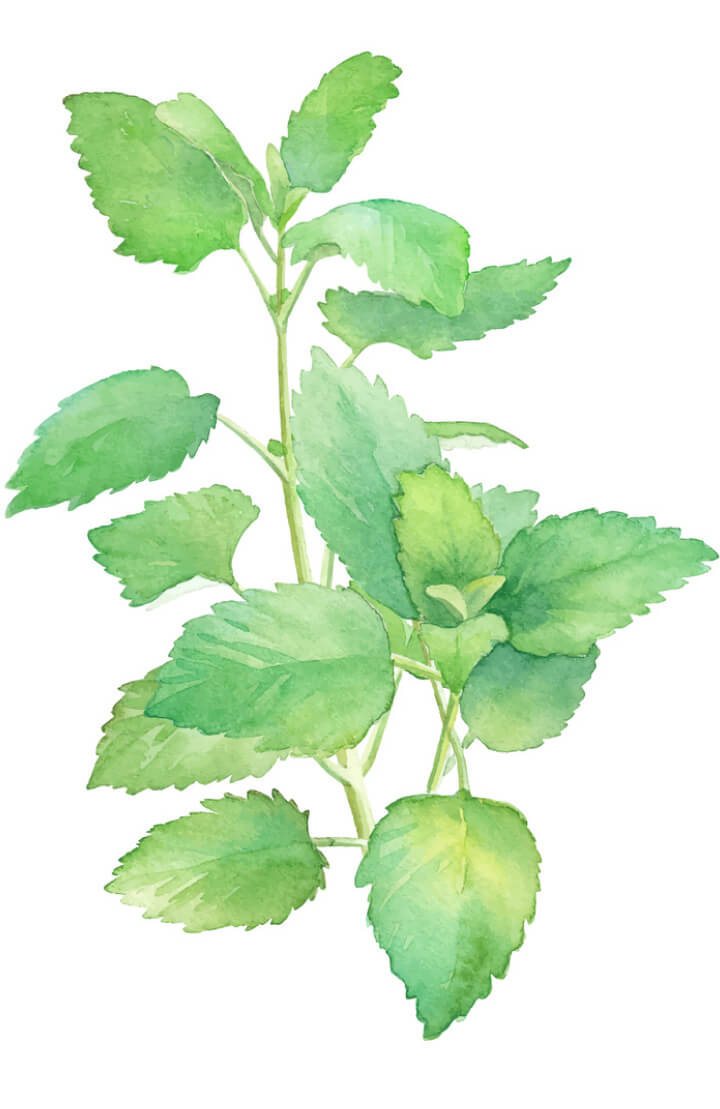
What makes it so good: Lemon balm is a nervine and a member of the mint family. It has a somewhat citrusy flavor, which comes from the terpene limonene. Limonene, as a compound, is popular for supporting a sunny mood—you’ll also find it in lavender, juniper, and some strains of cannabis. And while lemon balm does not have sedative properties, it’s great before bed because of its calming properties.
How to grow it: Lemon balm will flourish in all-day sun, but it’ll tolerate some shade, too. Just make sure the soil drains well and don’t overwater. One note, once your plant is growing: Lemon balm is an extremely successful self-seeder, and if you leave it unattended it may take over your garden. Clip off the flowers as soon as they appear if you want to avoid that fate.
What part of the plant to use: The leaves.
How to harvest it: You can take individual leaves as you need them. But for larger harvests, if you’re taking whole stems at a time, wait until the plant begins to flower.
How to use it: For a stronger tea with greater benefits, Robinett suggests an overnight infusion. Stuff a healthy handful of lemon balm leaves—something like a third or half of a cup—in the bottom of a Mason jar. Then fill the jar with hot water and let it steep overnight on the counter or in the fridge. “Most people are steeping tea for 5 to 10 minutes,” Robinett says. “When you steep overnight, you’re extracting the full spectrum of benefits from the plant: all the vitamins, all the minerals. You can drink the whole quart in a day.”
Goes well with: St. John’s wort.
Oregano

What makes it so good: Robinett keeps oregano oil with her to use when her immune system needs a boost—it’s naturally antibacterial, antifungal, and antiviral. Most often, she takes it orally when she’s traveling or applies it topically to cuts and scrapes. Plus, once it flowers, oregano tends to attract and support bees and other insect pollinators.
How to grow it: Oregano loves the sun, so plant it someplace where it’s bright most of the day. Water when the soil feels dry to the touch and trim the plant back weekly—you can pinch the stems off with your fingers—to encourage dense growth.
What part of the plant to use: The leaves.
How to harvest it: Clip sprigs as you need them—not more than a third of the plant at a time—then strip off the leaves by running your fingers down the stem. You can freeze the leaves for up to a year, too.
How to use it: Brew it as a tea or throw it into something savory. You probably won’t grow enough to DIY oil of oregano, but if you do, it’s a matter of infusing a bunch of oregano leaves into coconut or olive oil over the course of a couple weeks.
Goes well with: If you’re taking oil of oregano or drinking oregano as a tea, complement it with a vitamin D supplement or functional mushrooms like reishi, chaga, or turkey tail.
Peppermint
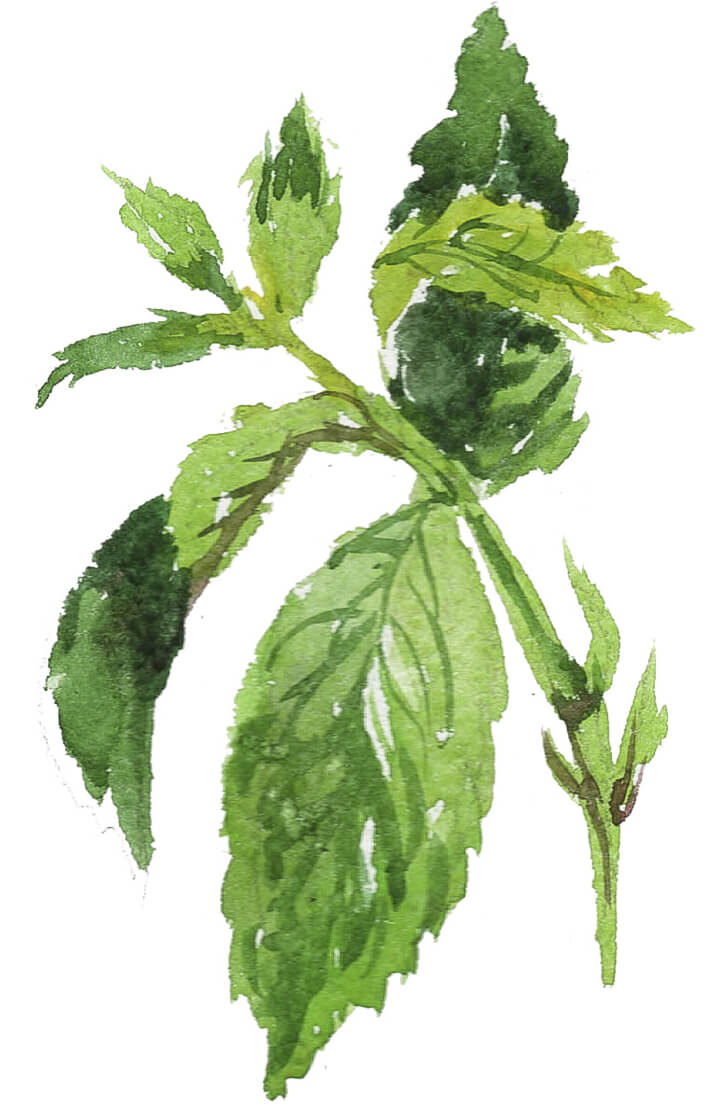
What makes it so good: Peppermint, Robinett says, is great after a meal while your stomach settles. She also likes it for its cooling properties—a trait you can feel for yourself when you brush your teeth with peppermint toothpaste or apply peppermint oil to your skin. Because it’s cooling, people may find it soothing for conditions with hot qualities, like acid reflux or certain kinds of headaches. Some people use it when they get hiccups, too. Fun herbalism fact: Peppermint is one of the herbs mentioned in the oldest-known preserved record on medicinal plants, the Ebers Papyrus, an Egyptian text dating to about 1550 BCE.
How to grow it: Peppermint likes a cool climate, slightly acidic soil, and partial shade. Very dry soil can spell ruin for a peppermint plant, so keep it consistently moist (but not muddy).
What part of the plant to use: The leaves.
How to harvest it: Peppermint’s oil is what gives it its flavor and functional properties, and it’s richest in this right when it starts to bloom. Pluck leaves individually if you need just a few, or cut whole stems if you need a lot. The best place to cut is right above the second-lowest set of leaves.
How to use it: You can brew a handful of peppermint leaves in hot water as an after-dinner tea, if you like. Or simply crush it between your fingers and inhale. Or if you’re down to DIY peppermint oil (it takes time, but it’s worth it), try blending a few drops into coconut oil and applying the mixture to the temples and the nape of the neck to help get you through a headache.
Goes well with: Caraway seed and fennel.
SOURCING MEDICINAL-QUALITY HERBS
If you’re growing herbs for functional benefits, you want to be sure what you’re planting is of medicinal quality: “A lot of rose geranium cultivars, for example, aren’t medicinal anymore because they’ve been bred to be beautiful instead,” Robinett says, She suggests getting your seeds or starts from a medicinal-quality source like Mountain Rose Herbs. If you have a local conservation group specializing in edible and medicinal plants, they should be able to point you in the right direction. (If you’re lucky, they may be able to teach you about foraging, too.)
Robinett also emphasizes the importance of cultivating herbs that are at risk of disappearing. For that, Flamingo Estate sells a pack of rare seeds, and United Plant Savers keeps a list of at-risk medicinal plants.
This article is for informational purposes only, even if and regardless of whether it features the advice of physicians and medical practitioners. This article is not, nor is it intended to be, a substitute for professional medical advice, diagnosis, or treatment and should never be relied upon for specific medical advice. The views expressed in this article are the views of the expert and do not necessarily represent the views of goop.
[ad_2]
Source link

